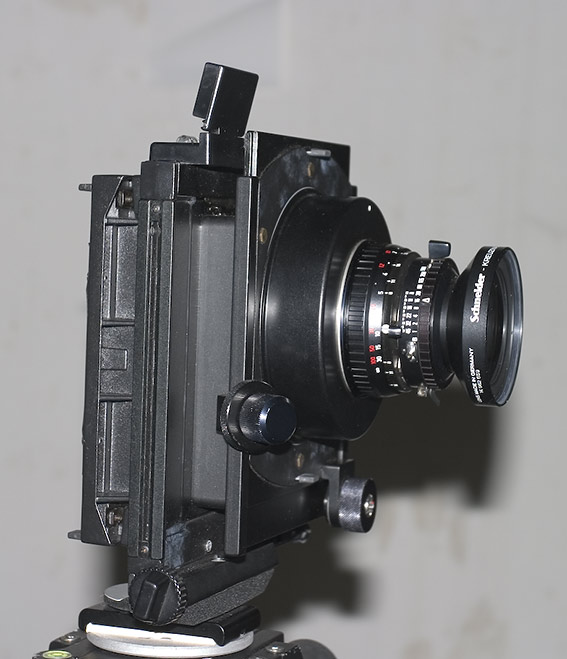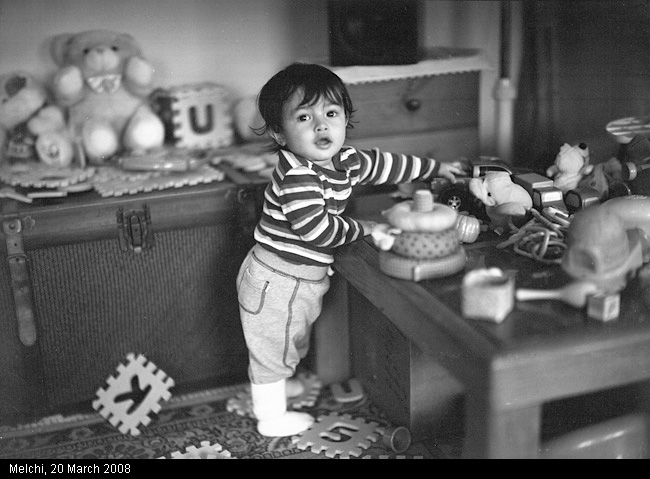Jörgen Nyberg
New member
Nice videos, interesting seeing you "in action", if one can say that about someone shooting with Sinar ;-)
Nice videos, interesting seeing you "in action", if one can say that about someone shooting with Sinar ;-)
You are correct in the sense that
(in general) shooting a MF camera requires a different type of shooting than a 35mm or smaller format does.
Bart

I disagree with Thierry about:
"these settings are made such easy and convenient with a large ground-glass."
Shooting per example interiors with a 65 mm on 4/5' has been a hazzle - it was really hard to judge the shifted image, due to the lens light fall off and darkening ground glass, even if you took the center filter away. But off course, the composition was better controllable on the pola.
And last but not least: LF means to carry a lot of weight arround!
In the evening of a LFshooting day, I found myself beeing closer to a donkey or a mule, than a photographer, especially if studio flashs had to be carried with.....
So basically, I'm not looking back; still keeping my 3 Sinars - one of them a very nice Sinar Handy, which I used a lot at the end of my film area, due to its lesser weight and faster setup - in the board.
Thierry, do you know why Sinar has been giving up early on the Handy?

Sinar Handy: you are a very lucky man to still have one. Keep it. When I joined Sinar in 1990, it was in the end stages of production and stopped shipping. The reason was a commercial one, because sales had dropped to a level where it was non-sense to keep it in production. But it's a pity, agreed.
Best regards, Thierry
I agree on that, Thierry. So you've been quite a good while at Sinar, going through different times ....
Yes, the Handy is a keeper, I even have the (bulleye) top viewer, the handle with the trigger, tac-sharps SA 65, SA 90 and Apo-Symmar 120, all in a near mint shape, so everything that was needed for archi-shots (apart from the filmholders) fitted in a small, lightweighted box.
I think I have been buying it - a good while ago - from Mr. Graf, who previously had been working at Schmid, in Aarau, the earlier Sinar vendor in CH.
I waited quite a while - this would have been my dream - that someone would come out with a 4/5-sensor, to use it with the Handy.
Do you know if someone has been adapting MFbacks to it?
LF is a good school, to get the basics of what photography is about.
35mm and MF that allow un rivalled fluidity like sports cars.
35mm and MF that allow un rivalled fluidity like sports cars.
Funny, I have no clue about LF (and so few about MF…) but my first findings working for the first time with the Sinar Hy6 is that it brings back to the basics… to the fundamental aspects of photography:
you have in hand:
a choice of lens and a film/sensor plane
an aperture for more or less light and DOF
a shutter speed to balance the aperture
a viewfinder to put what you want and only what you want into the frame
some more features (very few compared to modern dslrs)
.....
.....et voilà, à toi de faire mon gars!
So, having inversed courses, you Michael and I, do come to the same conclusion. Amazing!

One step in the learning curve of a switch 35 mm --> LF is the experience and use of the lenses;
Me too! We'll get Nicolas to insert the correct reference to the videos so it makes sense, unless anyone knows which they are, PM to me!Forgive me for being stupid but why does the first post look like it was taken from half way through another thread and if so how the heck am I supposed to read it?
One of the most complicated things is to load the film frorm the boxes to the holders and from the holder to the boxes in perfect order so that the lab knows which one is to be pulled or pushed.
Hi Michael,
You absolutely (well most probably) don't need shifts! The unque thing is that you have such as huge excess of resolution that you can make all your adjustment and orthogonal corrections afterwards.
